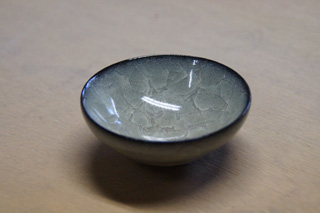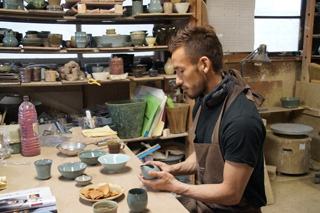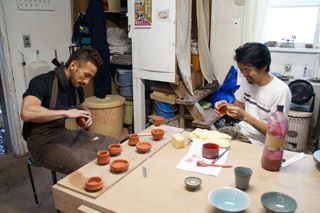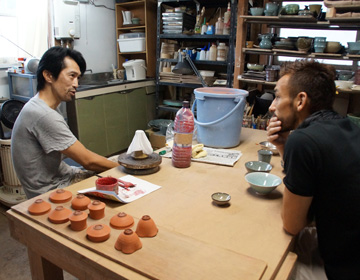 |
Final crackling designed by the flames“Wow, it’s beautiful” mumbled Nakata as he took a look at a piece by the potter Hidekazu Nakamura. He was especially attracted to the beautiful patterns of the “Kannyu” on the surface of the work. “Kannyu” in simpler English, is crackling that appear from the difference in the shrinkage factor of the base clay and the glazing on the surface upon cooling. |
Ceramic porcelain work“I really like how the cracking seems very three dimensional. Is this made by putting on many layers of glaze?” |
 |
 |
Stress from pottery is relieved by potteryWhen he gets tired of working on pottery, he sometimes simply puts it aside and makes new tableware. |
ACCESS
- Hidekazu Nakamura, Potter
- Tsuruoka, Yamagata Prefecture
 Discovering Japan [Nihon] through authentic craftsmanship [Honmono]
Discovering Japan [Nihon] through authentic craftsmanship [Honmono]